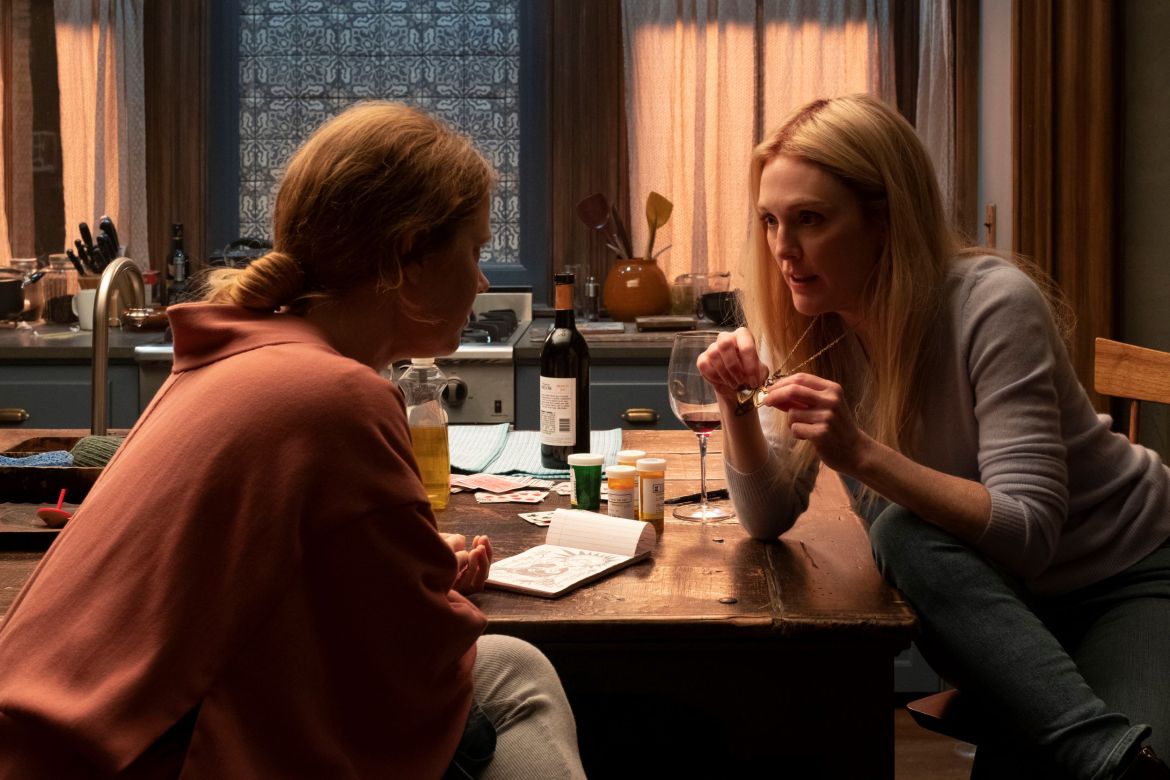There are a lot of things people will say and/or write about The Woman in the Window. They will compare it to Rear Window and The Girl on the Train because the audience is expected to compare it to Rear Window and The Girl on the Train. They’ll talk about the novel’s writer Daniel Mallory, who published the book as A.J. Finn and was later given a New Yorker profile that reads like a novel itself (and will, in fact, become a series in which Jake Gyllenhaal has been cast as the lead).
Mallory did find success with his boozy beach read, despite its derivative plot and layers of misogyny. It wasn’t ever a good book, but “good” isn’t a prerequisite for selling many, many copies, nor for adaptation into a feature film. Plenty of mediocre and outright awful books have become great movies. In the right hands, The Woman in the Window could have been one of them. For all its sloppy, unoriginal, mean-spiritedness, Mallory’s book still managed to be an entertaining enough page-turner that could have translated into a fun, 90s-era thriller. Instead, it is a flimsy bowl of overworked dough that manages to be even less fair to its female characters than the source material.

Amy Adams stars as Dr. Anna Fox, a child psychologist who has become agoraphobic, the reason for which is one of many jettisoned character developments. The novel does at least let its audience know that there has been a deeply traumatic accident and that Anna has spent much of the last year undergoing painful, in-home physical therapy. That part of the story, and her friendship with her physical therapist are absent from the movie altogether. The only significant details that transitioned to Anna’s onscreen persona are the big Harlem brownstone where she lives apart from her husband and daughter with whom she speaks daily; and she rents out the basement apartment to David (Wyatt Russell), the tenant who fits the attractive/enigmatic/moody quasi-stranger trope that such thrillers require. Anna is also an alcoholic and mixes her many medications with copious amounts of wine while gazing upon her neighbors and judging their lives. She reports these judgments to her shrink (played by screenwriter Tracy Letts), who is her only regular visitor.
The reason so many have compared The Woman in the Window to Hitchcock’s Jimmy Stewart classic is not an accident. In the book, Anna actually made references to it, along with other classic Hollywood movies. Somehow, Joe Wright seemed desperate to remind his audience of Rear Window. It was a miscalculation that failed on multiple levels. For one, the reminders were an unnecessary distraction. For another, it served to remind the audience instead of better movies. Not only of the original, but of clever, successful reimaginings like The ‘Burbs and Suburbia.
The real problem with this Window, though, isn’t just that it is a poor knockoff or a weird, cobbled together mess of bad acting, bad editing and bad writing. It’s the fact that this story is wildly unfair and mean to the women in it, and the movie manages to do an even greater disservice to them than the book did.
Instead of a traumatized, recovering, intelligent doctor, Amy Adams’ Anna sloshes wine all over herself and her hardwood floors, yells at anyone who ever tries to help her, and is even more unsympathetic than she is unreliable. There is no reason to believe anything she ever says, save for the fact that she’s the lead character in a thriller, so obviously she can’t be completely wrong about everything.
Before long, Anna meets the new neighbors she’s been gawking at. First it’s 15-year-old Ethan (Fred Hechinger) with whom she feels an immediate bond because, lest we forget, she was a Child! Psychologist! And Ethan clearly has a Troubled Relationship with his parents. Then she meets his mom, having already searched out Alistair and Jane Russell online. Adams shares a somewhat entertaining sequence with Julianne Moore, but all they do is drink and laugh while Jane draws a picture of Anna, who seems happy to have a new friend. But that changes a few days later when Anna watches from her window as Jane is murdered across the street by a killer who inexplicably doesn’t bother to close the blinds or turn off the lights.

Of course, this all leads to dealings with the police, a run-in with Alistair (Gary Oldman), and another woman introduced as Jane Russell, this time played by Jennifer Jason Leigh who is so completely wasted in the role that Joe Wright should be ashamed of himself. Between the two Janes, the lady cop (Jeanine Serralles), and Anna herself, there is no effort made to craft an interesting or sympathetic female character. The men fare slightly better, only because they are made out to be the long-suffering wretches in service to all these bitches who be crazy, even while some of the menfolk are assholes for no particular reason. In the whole movie, the only decent character is, uncomfortably, one of the police detectives. Although it’s forgivable because he’s played by the impossible-to-hate Brian Tyree Henry.
There are a lot of reasons why The Woman in the Window doesn’t work, and so many ways it could have. But even with (literal and intentional) cartoonish violence, plot twists undone by plot holes and underdeveloped story, and characters we can’t care about, this still never manages to be a movie that’s fun to make fun of. It’s just bad, and oh so very pointless.
The Woman in the Window is now streaming on Netflix if you feel you must.

